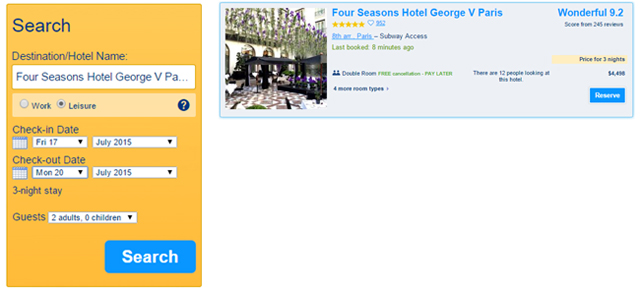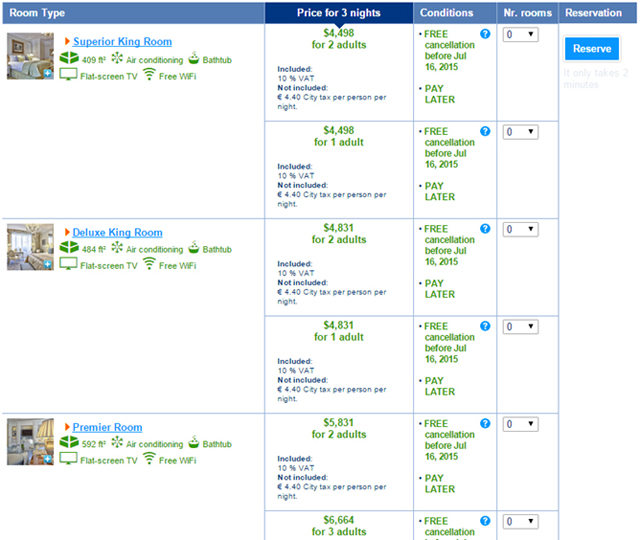By Pierre Boettner, founder and CEO, hospitality pulse
The industry buzz around "Big Data" is deafening.
'Big Data Analytics ' – its uses, abuses, and place in the playbook of travel technology tools – has filled hundreds of articles and many thousands of words over the course of the past five years.
But there is a huge disconnect between the ethereal language of Big Data, and the actual experience of the hotel guest.
Is there a connection? How can hotel managers, owners and brand executives actually use data to make guest experiences better??
Let's begin from a simple premise: The hotel stay is the core product of the entire leisure travel experience. So whatever the emerging technologies solve, they must center on the guest experience first and foremost.
There have been many attempts in the use of Big Data – for example, in the potential use of a hotel's loyalty database in distribution. A few years ago, everyone started talking about 'personalized offers' – and despite muted results, it has already morphed into 'hyper-personalization'.
Yet in spite of all attempts, the vision of making 'personalized offers at every touchpoint' continues to elude us. The marshaling of a hotel's data for giving guests "the right room at the right time at the right price" seems like an illusory objective at best. It has been illusory since the 1990s – when the phrase was invented by creative revenue managers!
And let's be honest: How much more "personalized" are guest experiences than they were two, three or even five years ago?
In a way, the lack of movement is not surprising, because the industry and even its leading technologists have not tackled the core problem. Indeed, next time you hear the phrase "personalization" in a meeting, ask the presenter a simple question: 'What exactly do you mean by personalized offer?'
Likely, you will hear about restaurants, spas, attractions and other ancillary spends.
But that's just what these offerings are – ancillary.
The fundamental question remains, how can we produce greater personalization of, and guest satisfaction from, our core product – the guest room?
Yes, the guest room – the main purchase the customer is making. It is her biggest spend, and turns into a private, almost intimate space for the duration of the stay. But once a room has been built, furnished and equipped, there isn't much we can physically change about it, to make it more personal. And so we keep looking to anything but the room itself, to try to personalize, and improve, a guest's stay.
One thing is for certain: so far, the impact of Big Data, and of all the valuable information being collected – which could, in fact, improve a guest stay – has been net to nil.
In the remainder of this article – part one in a series -, I will look at some reasons hotels have failed to apply Big Data to "the real world" of the hotel guest so far – and what we are trending towards.
How the OTAs Have Gained The Edge
As a hotel community, we have never really understood what Big Data is — and is not.
It begins from the nature of a hotel's data sets, and how they are accessed – but how many of us really understand how to access those data sets, and do it well?
In many cases, the data sets available are just too miniscule, the differences between one and another record are too minute to be used in a meaningful way. As a result, lots of time, money and energy have gone into a host of Big Data driven add-on tools that all solve some hotel problems, but none provide a truly holistic, comprehensive, and monetizable view of guest expectations. The real uses, and impact, of Big Data so far at hotels – has been remarkably small.
The Point of Sale has always received special attention. It is after all the very first interaction for the vast majority of guests. But what is most interesting is how the Online Travel Agencies (OTAs) have turned the Point of Sale not just into a moment of purchase decision – but a process that reverberates to impact the entire guest experience throughout his stay.
Let's take a look inside the process, to see what they have done.
OTAs are removed from the hotel room – the actual product. They hold no traditional points of view and no convictions of certain undeniable truths about 'our' guests. This has allowed them to use Data to analyze and then use a consumer's behavioral patterns in a ruthless and disciplined manner. Because the delivery of the promise made during the sale is entirely up to the hotel, OTAs can also apply Data to the promise at their leisure, while completely ignoring such 'mundane' constraints as actual availability.
Stay with me and review the website visuals below, to learn why Booking and cohorts are so much more successful at converting lookers to bookers, than hotels are:
!!! Note that while I am using one particular hotel here, you can replicate the results with pretty much any property!!!
On an OTA site:
- In the response above, a particular room category has been pre-selected. This is done based on very limited information (weekend stay, 2 adults). Other information stored in a host of available coookies on my laptop may have further influenced this choice. I recently booked 2 Double rooms at another hotel and Booking may very well have tapped into that history.
- The price is immediately visible and the booking decision takes just one more click.
- As consumers we WANT this to be the case; we want our interactions on the web to be easy to navigate and simple to conclude.
- It is only AFTER that booking decision has been made, that the traveller is shown available room categories, most at different rates.
- Note that the room that led to the decision is not available to book. Its place has now been taken by a King room, offered at the originally shown price.
- This may amount to false advertising, but the fact is, Booking.com is now much more likely to keep the traveler to finalize the reservation. This holds true even when the customer now needs to select a higher priced room to accommodate her needs.
- In a nutshell: The decision on which room to book has been separated from the decision to book the hotel. Each choice in isolation is easy to make.
By contrast, on a Brand's website:
To see the full result, I had to zoom out to 33% of my browser's scale. The room needs to be selected before a buying decision has taken place. With 7 distinct options, many aspects of each need to be compared and room descriptions read. Though we don't feel it, our brain is now asked to do some pretty remarkable acrobatics to make the choice.
This is where what neuroscientists call 'false choice paradox' comes into play. It works as follows: 'Consumers think they want to have lots of choices. But present consumers with difficult choices, and the process gets complicated. For example: 'Would I rather have a view of the 'Arc de Triomphe' or of the 'Tour Eiffel', or maybe rather a balcony, or maybe both…?' The reality is that we prefer, even expect choices to be simple, even self-evident. We want to make informed choices. We don't really want THAT many options, we really just want the ones that make sense for us, with the others serving to 'frame' or 'anchor' the deal. We prefer easy decisions over hard ones. It makes us feel empowered and feel good about our decisions.
Present no choices and consumers feel forced into a decision; present more than just a few, and your prospective guests may abandon the booking process.
Hotels will need to catch up on applied science and let go of cherished beliefs of what guests should be presented with, or what customers mean when they indicate they want 'choices'.
=
The point is that there has not been nearly enough attention paid, to the SCIENCE behind matching the right guest with the right room.
On TripAdvisor, the reportings of room mismatches were so dominant in negative reviews, that TA introduced 'room tips'. This is where travelers can share information about good or bad rooms with others.
Indeed, fulfillment of rooms has become a major focus for every major brand. Not just in operations, but in Marketing departments and Quality assurance as well. From the GM to the front desk agent, everyone is focused on achieving the best possible guest satisfaction.
So where do we fail?
Even in the hotel example shown above, distribution teams have already reduced the number of categories offered. They will want to continue consolidating to improve distribution performance, though even the current categories are probably no longer representative of detailed room differences. Rooms operations on the other hand would like availability tailored as closely as possible to each room request.
If every unique combination of Size, bed type, view, floor, connecting, accessible, balcony, elevator and so on and so forth were to be configured in the hotel system, the number of categories would balloon to many dozens. The likelihood of lookers turning away from such a site is all but certain.
What started out as an attempt to satisfy a guest with a reasonable number of well-tailored choices, has turned into a nightmare of complexity for the operation. Once the guest actually arrives at the hotel, the generic selling category and the requested features will need to be 'translated' into a real room. If you only then find out how many 'High Floor King Balcony Shower' rooms were requested for a given date, it is too late to take any corrective action.
Sadly, that is the reality hotels are dealing with daily.
To summarize, there is an inherent and increasing inefficiency in the ways rooms are currently assigned – and it turns on the misuse of, or inability to use properly, the right data to match customers' needs with the right inventory.
A few years ago, room fulfillment didn't seem to be that much of a problem, if any at all. One person spending less than an hour or so was really all it took to "balance the house," decide who would get upgraded while making a very rough approximation of the possible impact on future arrivals.
Today, with power having shifted entirely to the consumer and standards for a quality stay having risen dramatically higher, more hotels have dedicated more and more time to the problem. But solutions seem as elusive as ever.
Here is a prediction: As brands and hotels continue to search for new ways to capture more direct business, keep the guest satisfied, even more power shifts in the direction of the customer, the problem will intensify – and draw even more attention.
The room is a hotel's core product.
In my next article, I will take a closer look at the impact of this trend on the operation and financial results.




